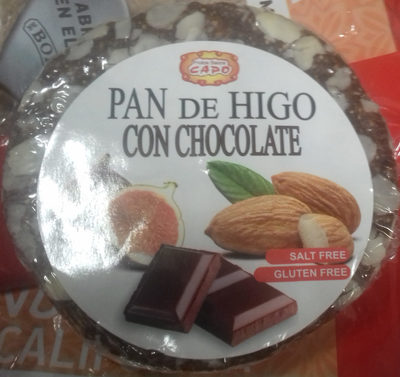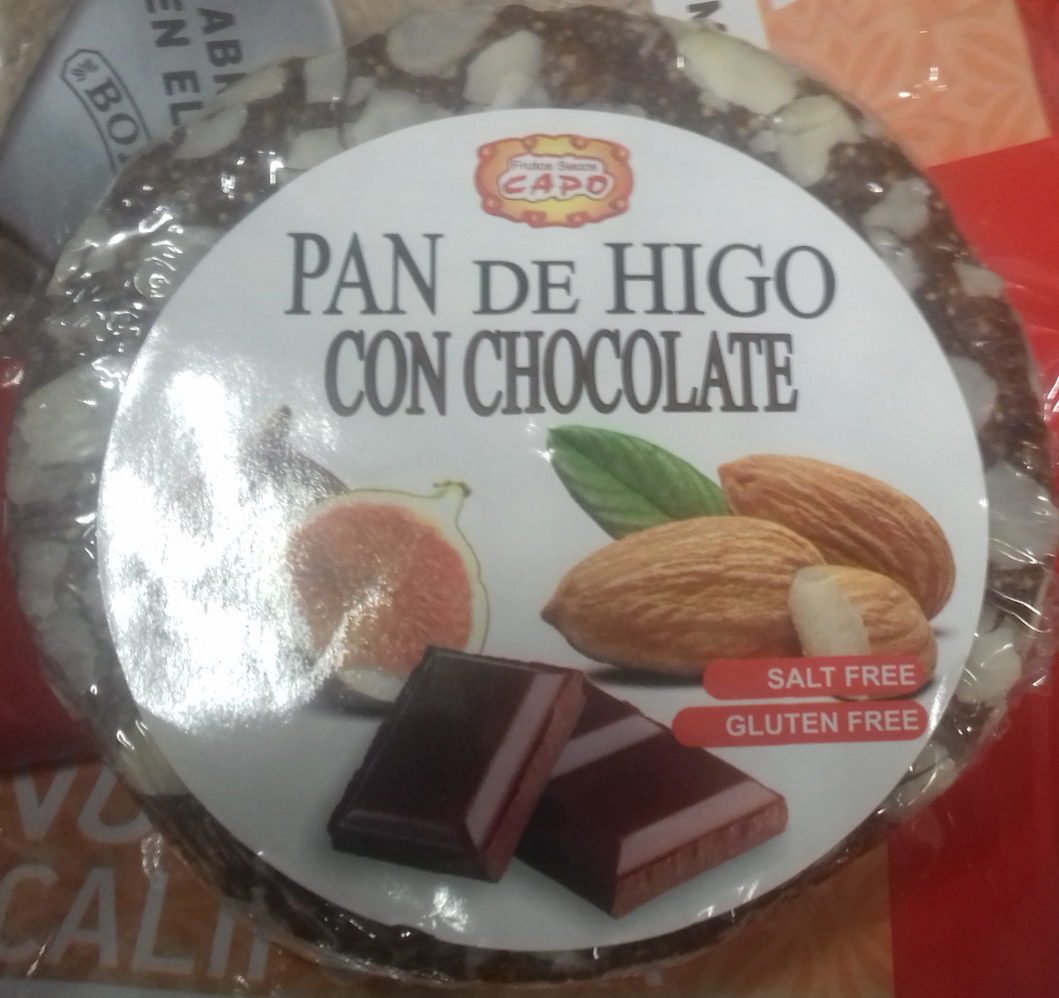Pan de higo con chocolate - Capo - 250 g
This product page is not complete. You can help to complete it by editing it and adding more data from the photos we have, or by taking more photos using the app for Android or iPhone/iPad. Thank you!
×
Barcode: 8413365031596 (EAN / EAN-13)
Common name: Pan de higo con chocolate
Quantity: 250 g
Packaging: Plastic
Brands: Capo
Categories: Plant-based foods and beverages, Plant-based foods, Snacks, Sweet snacks, Confectioneries, Festive foods, Christmas foods and drinks, Dried products, Christmas sweets, Dried plant-based foods, Dried fig cakes
Labels, certifications, awards: Low or no salt, No gluten, No added salt
Manufacturing or processing places: España
Stores: Carrefour
Countries where sold: Spain






